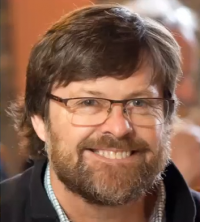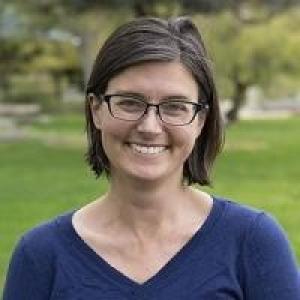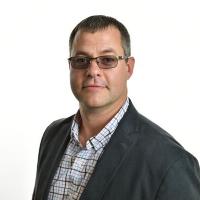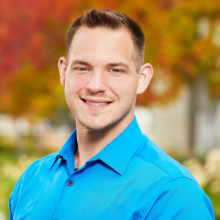Environmental Transformations and Interactions
Computing, Analytics, and Modeling
Functional and Systems Biology
Scientists Advocate for Fellow Users on EMSL Committee
Nominations for three member seats now being accepted

The EMSL User Executive Committee represent the EMSL user community and provides recommendations to leadership.
* Updated: May 9, 2023
As a scientific user facility, the Environmental Molecular Sciences Laboratory (EMSL) serves as a hub for researchers to explore and answer environmental and biological questions.
Under EMSL’s one-stop shop, scientists or “users” who have been awarded research funding have access to more than 150 advanced instruments and a cadre of experts who can help turn a hypothesis into a finding or discovery.
Seven scientists, who are also EMSL users, currently serve on the EMSL User Executive Committee (UEC) to provide recommendations and advice to the EMSL director and management on matters affecting the EMSL User Organization. As members of the UEC, each researcher is currently leading or participating in an EMSL user project.
EMSL is currently accepting nominations for three committee seats. The elected users will each serve three-year terms. The deadline to nominate a user or to self-nominate for a position is May 12. The EMSL user community will vote on the new members starting May 16. Election results will be announced June 12.
The purpose of the EMSL User Executive Committee
The UEC advises management on the needs of users related to instrumentation, infrastructure, and facilities. The committee also plays an important role in planning the annual EMSL User Meeting and works with the EMSL ombudsman to discuss interactions between users and staff.
Committee members are elected and represent one or more of EMSL’s science areas: Environmental Transformations and Interactions, Functional and Systems Biology, or Computing, Analytics, and Modeling. To maintain diversity on the committee, only one representative from an institution can be on the committee at any time.
Meet the committee
The current EMSL UEC is made up of Jeffrey Blanchard, Erin Nuccio, Jianqiu Zheng, Kevin Solomon, Tom Metz, Gareth (Gary) Trubl, and Naruki (Seonggi Moon) Hiranuma. EMSL users can meet the UEC at the EMSL User Meeting (October 3–5) at Pacific Northwest National Laboratory (PNNL). Registration for the meeting is open now.
JEFFREY BLANCHARD
Computing, Analytics, and Modeling
Jeffrey Blanchard is the current chair of the UEC. As a researcher, Blanchard explores microbes, specifically how forest microbial communities contribute to climate change. Blanchard is an assistant professor at the University of Massachusetts Amherst, where he leads a laboratory focused on this microbial work.
On EMSL user projects, Blanchard has applied EMSL’s proteomics, lipidomics, metabolomics, and soil organic matter analytical instruments to conduct climate change research. Now as part of the UEC, he is committed to fostering the development of EMSL’s analytical capabilities and computing expertise.
FUN FACT: In April 2010, Blanchard received a Charles Bullard Fellowship from Harvard University to study genome-based approaches for understanding relationships between microbial community members and worked at Harvard Forest during a one-year sabbatical.
ERIN NUCCIO
Environmental Transformations and Interactions
Erin Nuccio is a soil microbial ecologist and staff scientist at Lawrence Livermore National Laboratory as well as the vice chair of the UEC.
She sees her role on the UEC as a listener and advocate.
“I want to understand the users’ concerns, brainstorm solutions, and then effectively communicate those ideas to EMSL leadership,” Nuccio said.
Nuccio was introduced to EMSL as a graduate student working on a project led by Mary Firestone and Jennifer Pett-Ridge, looking at the fate of rhizosphere carbon in soil. Since then, Nuccio has served as a co-investigator and is currently a principal investigator working on a Facilities Integrating Collaborations for User Science (FICUS) program project using EMSL’s proteomics and metabolomics resources to understand how mycorrhizae fungi interact with their soil microbiome.
“EMSL has a multitude of unique resources that are continually changing, and I’ve found it’s a great place to propose ideas that wouldn’t be possible elsewhere,” Nuccio said.
FUN FACT: Nuccio’s first research project was studying hemi-parasitic plants on the stable sand dunes near Monterey, California. Since then, she has had a soft spot for plant parasites. “In California, we have dramatically orange Saltmarsh Dodder (with fun folk names like “strangleweed” or “witch’s shoelaces”) that twines around the marsh plants surrounding San Francisco Bay, Oak Mistletoe that grows in great bunches overhead in the oak savannahs, and the stunningly red Snow Plant that seems to pop out of nowhere on the forest floor in the Sierra Nevada.”
JIANQIU ZHENG
Computing, Analytics, and Modeling
Jianqiu Zheng, a computational and experimental scientist at Pacific Northwest National Laboratory, is leading a FICUS project studying soil biogeochemical responses in a coastal ecosystem and is a co-investigator for two Large-Scale Research funded projects. She recently joined the UEC and hopes to bring an innovative perspective on the needs of users to facilitate effective communications between users and EMSL leadership.
Zheng noted that the draw of the EMSL user program is the variety of instruments for biological, Earth, and environmental systems and the opportunities to use multiple instrument platforms at once.
“The best part of the user program comes from the interactions with various instrument scientists and experts,” Zheng explained. “I often joke about how instrument scientists have completed my education in mass spectrometry.”
She has used EMSL’s Fourier transform ion cyclotron resonance mass spectrometry and nuclear magnetic resonance for gaining detailed chemistry information on soil organic matter.
“As an Earth system modeler, I do a lot of hypothesis-driven research, so high-resolution data I get from EMSL helps me to evaluate different types of assumptions I use in my models,” Zheng said.
FUN FACT: Zheng loves puzzles. “Imagine receiving Sudoku or Kakuro books from close friends for Christmas. I think this explains the research I love so much, looking for patterns and mathematical logic in data to build predictive models.”
KEVIN SOLOMON
Functional and Systems Biology
Kevin Solomon has been an EMSL user for eight years and currently has two FICUS projects investigating lignocellulose and plastics degradation. Solomon is a recipient of Department of Energy Early Career, National Science Foundation CAREER, and Society for Industrial Microbiology and Biotechnology Early Career Awards, and has provided expert testimony before the 116th U.S. House of Representatives, was featured in Forbes magazine, and was recognized as being among the 1000 inspiring Black scientists to watch.
“We've made extensive use of EMSL’s Orbitraps for identifying and quantifying proteins (proteomics) and detecting rare histone PTMs [post-translational modifications] (epigenetics),” Solomon said. “Through these projects, we've identified thousands of novel fungal proteins that may help accelerate the development of lignocellulosic fuels and identified for the first time epigenetic strategies that their host uses to coordinate their expression. We're currently leveraging a similar pipeline to identify novel plastic-degrading enzymes for polystyrene and polyethylene from mealworm gut microbiomes, as well as using chemical imaging to understand how microbes bind plastics to gain access to them for accelerated plastics degradation.”
As a UEC member, Solomon advocates for cutting-edge infrastructure to improve the ability of users to answer pressing scientific questions and work with EMSL leadership to ensure equitable and fair access to resources.
FUN FACT: Solomon loves Zumba.
TOM METZ
Functional and Systems Biology
Tom Metz has close to two decades of experience using EMSL instrumentation for omics studies. Metz is a senior scientist and principal investigator in the Integrative Omics group at Pacific Northwest National Laboratory. His research focuses on high-throughput metabolomics and lipidomics methods and the correlation with proteomics.
“I primarily use the mass spectrometry instrumentation within EMSL for omics studies, where comprehensive and sensitive measurements of proteins, metabolites, and lipids in relatively high throughput are required,” Metz explained. “This has helped us to identify novel biomarkers of disease, and also learn fundamental and mechanistic insights into the complexity of the underlying molecular biology of a number of systems.”
He previously served as chair of the UEC and is serving a term that ends in October.
“Having been a PNNL employee and utilizing EMSL instrumentation for my research for almost 20 years, I hope to offer an insider’s perspective to both EMSL users and management,” Metz said.
FUN FACT: Metz has eaten squirrel.
GARETH (GARY) TRUBL
Environmental Transformations and Interactions and Functional and Systems Biology
As a microbiologist at Lawrence Livermore National Laboratory, Gareth (Gary) Trubl studies viruses and virus–microbe interactions in soil ecosystems. Trubl learned about EMSL after listening to a presentation on the FICUS program.
“What got me interested in EMSL was their capability to analyze samples for several mass spectroscopy instruments, metaproteomics, and their expertise in soil biogeochemistry,” Trubl said.
Trubl has used FTICR-MS, lipidomics, liquid chromatography mass spectrometry, and liquid-state nuclear magnetic resonance to better understand the organic matter chemistry in soil samples. As a UEC member, Trubl sees his role as a navigator that users can have a “genuine conversation with to help direct their science.” He also wants to steward EMSL science and to guide funded initiatives in the direction of excellence.
FUN FACT: “I am a soil viral ecologist. This field is still in its infancy and lies at the intersection of microbial ecophysiology, environmental science, and bioinformatics. There is so much science to explore, and I constantly find myself wearing different hats.”
NARUKI (SEONGGI MOON) HIRANUMA
Environmental Transformations and Interactions
Naruki (Seonggi Moon) Hiranuma first heard about EMSL as a graduate student. His academic advisor, Sarah Brooks, arranged a summertime visit to EMSL to conduct chemical analysis of aerosol particles collected from the Alaska North Slope region. Hiranuma, an associate professor of environmental science at West Texas A&M University, been an EMSL user ever since and has now been involved in five user projects. Additionally, he was a postdoctoral researcher at Pacific Northwest National Laboratory a decade ago and maintained close interactions with EMSL scientists through aerosol research. Now as a UEC member, Hiranuma sees his role as representing user needs related to aerosol research capabilities.
Hiranuma has used a variety of EMSL instrumentation over the years, including:
- Computer-controlled scanning electron microscopy/energy dispersed X-ray/ice nucleation stage (CCSEM/EDX)
- Ice nucleation chamber
- Single particle mass spectrometry (SPLAT)
- Nanoscale secondary ion mass spectrometry (NanoSIMS)
- Transmission electron microscopy–energy dispersed X-ray/electron energy-loss spectroscopy (TEM-EDX/EELS).
When it comes to submitting a successful research proposal to an open call for proposals, Hiranuma offers these tips:
- Touch base with EMSL instrument owners to detail synergistic and unique collaboration between the applicant and EMSL.
- Keep your project goal simple and align the goal with the missions of the Department of Energy, Office of Science, Biological and Environmental Research program.
- Offer hypothesis-driven science.
FUN FACT: Hiranuma has traveled across the world with students, and as far as 79° N latitude in the Arctic, to hunt rare atmospheric ice-nucleating particles that are a few in a million particles for climate research.

